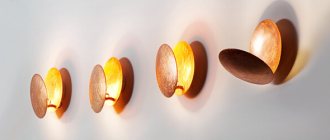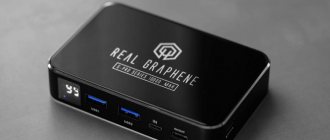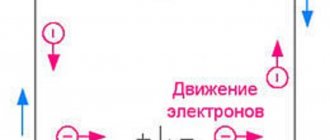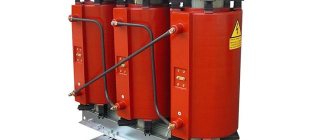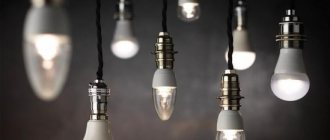The essence of multi-tariff electricity metering
Throughout the day, electricity is consumed unevenly by the population. If during the day the stations operate at full capacity, then in the evenings the load on them is minimal. As a result, during the daytime hours, when consumption peaks, all generators operate, but at night some of them stop.
Uneven operation of equipment that consumes a lot of fuel causes excessive consumption of resources. As a result, the costs of producing electrical energy are rising sharply. To reduce costs, suppliers have introduced tariffs differentiated by day zones. At night, electricity is cheaper, which encourages people to use it more actively at night, thereby shifting the maximum consumption. You can take advantage of this advantageous offer by installing a three-tariff or two-tariff meter.
Different types of counters
A huge number of economical two-tariff meters, two-mode and three-mode are available for sale today. Of these, by type of connection, the following can be distinguished:
- A meter directly connected to the network is a standard device that is connected to the electrical network without auxiliary devices. The maximum parameters of its operation are: passing current to the carriers - 100 Amperes. The wire cross-section is relatively small.
- Semi-indirect connection meter - unlike the first type, its connection and operation requires additional transformers that pass additional power. To take readings from such a device, it is enough to calculate the difference between the figures for the previous and current months. The difference number is multiplied by a special coefficient.
- Indirect connection meter - its connection and operation occurs using additional transformers. These units are most often purchased not for apartments and houses, but for enterprises and office premises where large amounts of electrical current are required.
What time does the night electricity tariff start from?
There are 3 options for charging electricity consumption:
- single;
- two-zone;
- three-zone.
The payment coefficient is uniform and constant; the time of day does not affect it.
If a single tariff is established, a traditional meter without differentiation is used to calculate costs. It is used only by those consumers who do not want to change equipment.
To use a two-zone tariff, you must install a two-tariff meter. The equipment will calculate the level of consumption in different time zones: from 7:00 to 23:00 the daily, more expensive tariff is valid. At 23:00 the device starts calculating costs at the night rate. When calculating payments for services, it is necessary to multiply the data from the meter by the tariff established in the region. In the utility receipt, the data is entered in 2 lines (for day and night tariffs).
The three-zone tariff works on a principle similar to the two-zone one, but the time frame is slightly different:
- the night rate is valid from 23:00 to 7:00;
- semi-peak zones include the intervals from 10:00 to 17:00 and from 21:00 to 23:00;
- Peak times are from 7:00 to 10:00 and from 17:00 to 21:00.
Tariff validity period
With a two-tariff calculation method, the night tariff for electricity is applied, the time of its use is from 23:00 to 7:00. It is worth calculating how much you can save by using it.
For example, in 2022, the simple electricity tariff for the Moscow region is 4.04 rubles/kWh. If we consider a two-tariff system, then during daylight hours users pay 4.65 rubles/kWh, and during dark hours the tariff applies with a coefficient of 1.26 rubles/kWh. Despite the fact that the difference between the single and daily two-rate system is 61 kopecks. in favor of the first, the savings are obvious. Electricity consumption at night will be more than 3 times cheaper.
Savings are only possible if a person is not at home during the daytime, but can do some household chores at night. Experts have calculated that switching to a differentiated tariff is beneficial if the consumer consumes at least 500 kW monthly.
How to speed up the payback of such a device?
The payback of a two-tariff meter is a separate topic. You need to pay a tidy sum for installing or reflashing the device. These devices are not installed free of charge and are more expensive than standard single-tariff flow meters.
We talked about the cost of installing and replacing electric meters in this material.
A two-tariff meter of any brand is more expensive than a single-tariff meter due to the features of the software and more complex functionality
Externally, a two-tariff electric meter is no different from a standard meter. The difference between them lies only in the readings, which display information for night and daytime differently.
Due to the fact that the dimensions of the meters are the same, a new device can be installed in place of the old one.
Any person who understands electricity and fire safety can install a new two-tariff meter, but only an employee of the company providing the service can seal the device
Before installation, you need to evaluate the feasibility of using the device and, perhaps, settle on a single-tariff device.
If an electric meter is already installed, you can think about the optimal consumption of electricity:
- turn on the washing machine and dishwasher only after 23:00;
- set a timer on the multicooker so that it starts cooking before the household wakes up, i.e. until 7 am;
- start the water heating mode in the boiler (if there is one) only at night, and during the day activate the temperature maintenance function in it (maintaining the water temperature requires much less electricity than heating it).
In this case, you will be able to save about 200 rubles per month. Those. The installation of an electric meter will take 2 years.
If you don’t try to use electrical appliances after 23:00, then there will be no tangible benefit, because even the meter itself will take about 5 years (if not more).
Temporary peak zones
By tracking daily dynamics, you can identify several temporary peak zones, or rush hours.
- The morning peak occurs between 7:00 and 10:00.
- After the morning peak comes the first half-peak. This day zone includes the hours from 10:00 to 17:00. There is a load on the network, but it is not too great.
- The evening peak starts at 17:00 and ends at 21:00.
- The duration of the second half-peak zone is from 21:00 to 23:00.
The night zone is not considered a peak zone, since from 23:00 to 7:00 costs are minimal. To save on utility bills, you should install a special meter and try to use powerful appliances at night. On a two-tariff meter, day and night (evening) are designated as T1 and T2. The first period starts at 7:00, the second at 23:00. Peak hours are taken into account when using three-tariff meters.
Scheme of operation of the counter
This counter works very simply. To do this, you need to imagine several conventional electricity meters collected into one large one. And one separate counter in this mechanism begins to work at the time programmed in it. But to transfer the readings to the company, the tenant takes the readings separately (separately for “day”, separately for “night”), after which they are added up into one amount. It is very easy to calculate them: multiply the readings by their current tariffs, and then add them up. The resulting amount of money is the cost of electricity for this period of time.
This counter cannot be controlled mechanically, that is, with your own hands. It runs on electricity and its control panel also runs on current. There are two ways to stop it.
You just need to configure the counter correctly, and using the “day” panel it will switch to the hours entered there. All kilowatts consumed over a certain period are stored there. It's very easy to count them. Therefore, there is no need to delay purchasing. It is more practical to install such a device when moving into a new apartment or house or during a major renovation.
Day-night tariff
The two-phase method of calculating electricity is otherwise called the day-night tariff. It operates in many regions of our country, but tariffs for the population vary. The differentiated regime is especially popular in the capital. It is beneficial to people who:
- actively use powerful electrical appliances, such as bread makers, boilers, dishwashers;
- equipped their apartments with warm floors or a convection heating system;
- have large country houses with an extensive lighting system, well or sewage pump, etc.
Advantages of night tariff for electricity
The advantages of the preferential tariff are obvious:
- Electricity consumers can achieve good cash savings. To do this, you need to adjust your regime, reducing daytime, but increasing nighttime electricity consumption.
- Suppliers are able to reduce the load on equipment, resulting in less wear and tear and fewer breakdowns. This allows you to save budget funds.
- Evenly distributed load on electrical grids is a good way to save the fuel needed to produce energy.
- Due to the absence of overloads, the amount of emissions of harmful substances into the atmosphere is reduced.
- Modern metering devices are equipped with built-in memory modules. They allow you to save meter readings even if there is a power outage.
However, users should note that different cities have different preferential rates. Before switching to a differential system, experts recommend making calculations and finding out how profitable such a solution is. If only the refrigerator operates in the house at night, the consumer should think about the need for a two-tariff system. Before the transition, you should calculate how long it will take to pay off the costs of new equipment and electrician services.
Disadvantages of the night tariff
The differential tariff has not only advantages. The multi-tariff system also has several disadvantages:
- With the increase in nighttime electricity consumption, users have to monitor the operation of home appliances in the dark. As a result, a person’s daily sleep and wakefulness patterns are disrupted, which is fraught with health problems.
- If devices are left to operate unattended, there is a high risk of fire or flooding.
- Noisy household appliances, such as a washing machine, can prevent neighbors or family members from getting a good night's sleep.
Another disadvantage is the initial cost of installing a new meter. However, when using a two-tariff meter, the savings are so great that they will pay for themselves in the first year.
Recommendations for choosing a two-tariff electricity meter
When choosing a device for your home, you should pay attention to the capabilities that the meter has. In addition to basic data, metering devices can measure:
- voltage;
- instant power consumption;
- frequency
Some modifications have built-in memory drives that allow you to save data from previous periods, RCDs and protection against power surges in the network.
When purchasing a device with differential pricing, it is important to clarify whether the selected model is approved by the state registry. Options and parameters of devices must comply with the current tariff plan. To ensure this, it is best to contact your local energy supply company for advice.
It is prohibited to buy metering devices from random sellers or companies with a dubious reputation. The company must have permission to sell such equipment and relevant documentation.
Two-tariff meter Schneider Electric




